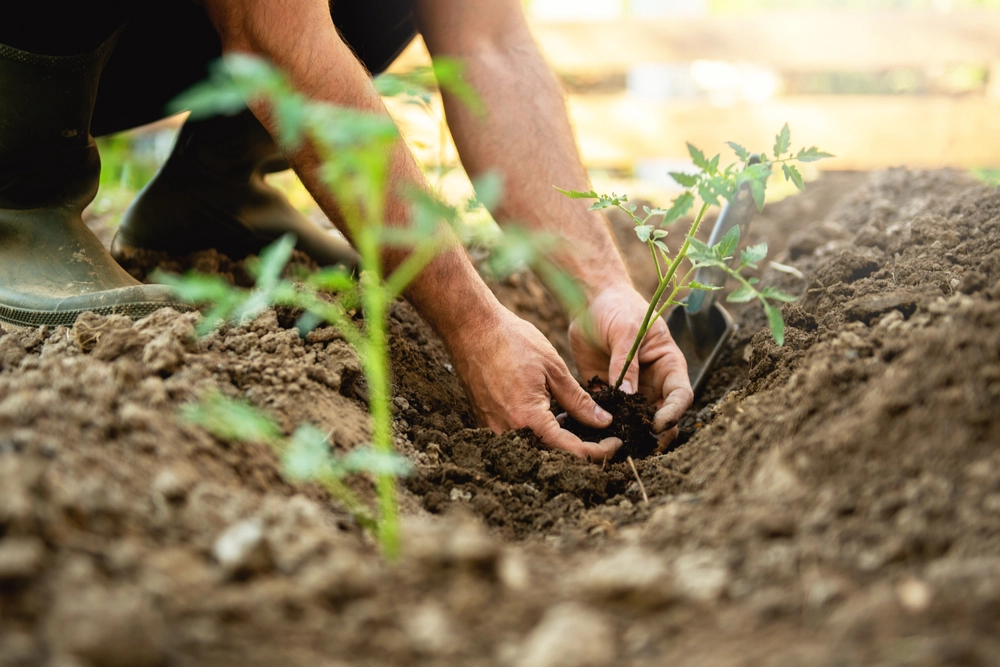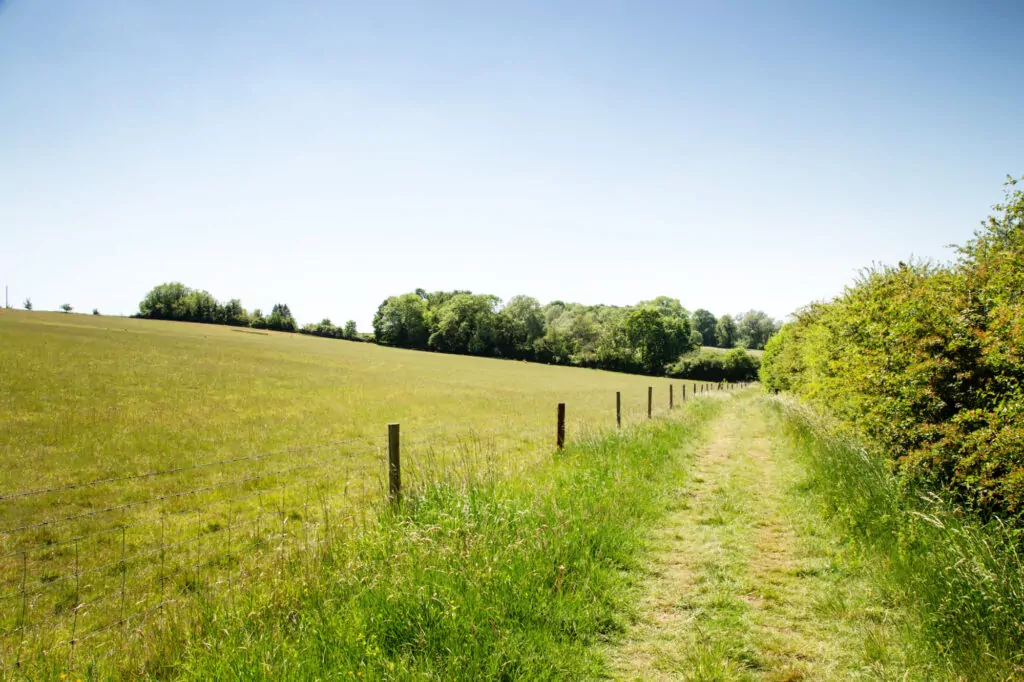
A guide to Environmental Land Management Schemes: A new form of funding for farmers

By Edward Venmore, Rose Westwood
20 Mar 2024 | 3 minute read
In May 2023 we brought you an update on the Environmental Land Management Schemes (ELMs), which are intended to replace the Basic Payment Scheme (BPS). So, what does the future of farming look like under ELMs in 2024?
ELMs focus on public money for public good and currently consists of three different funding types:
- Sustainable Farming Incentive (SFI)
- Countryside Stewardship (CS)
- Landscape Recovery (LR)
SFI is a three-year scheme that provides a farmer with nine different ‘standards’ to choose from, to gain access to funding for producing certain environmental goods and services (more standards are expected to be announced later in 2024).
Within each standard are several ‘actions’ a farmer can select. The actions represent a commitment from farmers to do certain things on their farm, such as assessing soil and alleviating soil compaction, under the Arable and Horticultural Soils standard.
All farmers previously eligible for BPS are eligible for SFI, including those already in land management schemes such as Countryside Stewardship (CS). The government aims to expand the range of options on offer and explore making it available to a wider group of participants in 2024.
Farmers can stack actions together from different standards on the same parcel of land. Farmers can also stack SFI schemes with CS. However, farmers will not be paid twice for producing the same environmental good.
Tenant farmers do not need their landlord’s permission to enter SFI schemes, but they do need to pledge to having management and control of the holding for the full three-year period. If the agreement is bought to an end early, farmers may be required to pay back some of the money they have received under the scheme.
Therefore, farmers on annual rolling tenancies or licence arrangements should discuss the schemes with their landlord before entering to be confident that they will have management and control for the next three years.
These agreements are not designed to be transferred between farmers. Unlike BPS entitlements, they cannot be included as part of a sale of farmland. They are specific to the farmer that entered the SFI agreement at the start of the three-year period.
Countryside Stewardship (CS) provides financial incentives for farmers, foresters, and land managers to look after and improve the environment.
CS protects and enhances the natural environment by:
- Increasing biodiversity
- Improving habitat
- Expanding woodland areas
- Improving water quality
- Improving air quality
- Improving natural flood management
There are different grant options within CS, which include capital grants or revenue agreements, known as higher tier agreements and mid-tier agreements.
Higher tier grants are offered for multi-year management options and capital items for the most environmentally important sites. These include commons and woodlands. They are usually in places that need complex management. For example, creating or restoring habitats and improving woodland.
The aim of mid-tier is to protect and enhance the natural environment through multi-year management and capital grants. They seek to improve the diversity of wildlife, water quality, air quality and natural flood management.
There are currently about 40,000 CS agreements, covering circa 34% of agricultural land. By 2028, the plan is to increase this to at least 70,000 agreements, covering 70% of farmed land and 70% of all farms.
CS is available to farmers, foresters, and land managers. Tenant farmers are eligible, but landlord consent is required. A landlord can refuse consent, but there is regulatory provision allowing a tenant to apply to vary the terms of their tenancy to permit the scheme.
CS schemes can be transferred to a new owner on sale. However, the buyer can decline to accept the scheme
Landscape Recovery (LR) will provide both public and private funding to landowners or managers to support large scale projects, through bespoke long-term agreements, which extend beyond 20 years. The projects will usually involve multiple landowners over multiple land parcels, as the first LR round required at least 500 hectares to be included within a project.
Round 1 of LR was launched in 2022. The application process was oversubscribed with 51 applications made for the 15 places advertised. Ultimately, 22 projects were approved, covering 40,000 hectares. The focus of round one was on recovering and restoring threatened native species and restoring streams and rivers.
Round 2 was launched on 18 May 2023 and focused on projects that supported the net zero agenda, protected sites and wildlife-rich habitats. A further 34 projects were offered funding. Together, the projects involve more than 700 farmers and landowners to support more than 200,000 hectares across England.
Defra will benchmark payment rates against other government schemes to ensure payments offer value for money. Defra’s indication is that payments will be in the range of £200 to £900 per ha per year. These costs will be funded by a mixture of private and public funding.
All types of land and landowners or land managers are eligible to apply. However, considering its large scale aims, it will likely involve multiple landowners grouping together to submit an application. Land in an existing scheme can be included, although Defra will not pay for the same activity twice.
Defra and a panel of experts select projects based on criteria including:
- Feasibility and cost
- Environmental benefits, carbon and climate resilience
- Social impact and community engagement
- Impact on food production
Defra has committed to opening a third round of applications in 2024.
What is new for 2024?
In December 2023, the Environmental Audit Committee published a report entitled Environmental Change and Food Security. The report focuses on food security in terms of the UK's ability to provide enough food for its population in a sustainable way. One of the key recommendations was to designate food security as a public good and incorporate food security and environmental goals more explicitly in the design of ELMs.
In early January the government announced a list of plans to take this ambition forward in 2024, including:
- Combining the SFI and CS offer from the summer of 2024 with a single integrated online service for applications.
- Increasing payment rates by an average of 10% for Sustainable Farming Incentive (SFI) and Countryside Stewardship (CS) agreements.
- Increasing the number of actions on offer in environmental land management schemes with up to 50 new actions.
- Paying a premium for high ambition actions or for delivering packages of actions that will achieve greater environmental benefits.
- Continuing to prioritise an ‘advise and prevent’ approach across schemes and regulation, which will make things fairer for all farmers participating in schemes.
- Making standalone capital grants available with a rolling application window, meaning you can make applications at any time of year. The Capital Grant 2024 offer provides standalone capital item agreements that deliver environment outcomes within four groups: boundaries, trees and orchards, water quality, air quality, and natural flood management.
For more information, please see the government announcement.
Legal and other implications
Length of scheme: You need to be comfortable that you can commit your land for the life of the scheme. For the longer-term agreements such as CS, that will mean obtaining landlord consent if you are a tenant. It is important to check your tenancy agreement to understand what the conditions for obtaining landlord consent are and make sure you follow those terms. If consent is unreasonably refused, there are ways for tenants to challenge this.
If you are considering a sale of land, you need to check whether any ELMs funding agreements that have been entered into can be transferred with the property or brought to an end. SFI agreements, for example, cannot be transferred. You will need to check if there is a penalty for early withdrawal from the agreement.
Tax: It is very important to consider the tax implications of any scheme you sign up to. In the 2024 Spring Budget the government announced it will extend agricultural property relief (APR) for inheritance tax from 6 April 2025 to land managed under an environmental agreement with, or on behalf of, the UK government, devolved administrations, public bodies, local authorities, or approved responsible bodies. This will include any agreements under ELMs which is welcome news for farmers. This means that entering into an ELMs agreement will not impact on the inheritance tax reliefs available on that land. Further clarity is still awaited in relation to other environmental schemes and natural capital markets.
Value: For the long-term schemes in particular, it is sensible to seek advice from a professional valuer on the impact the scheme could have on the value of the land compared to land being used solely for agricultural purposes. Any change in value should be considered in terms of succession planning for the property.
Future restrictions on land use: If you commit land to any of the ELMs schemes and produce environmental goods and services on the land, this could reduce the likelihood of being able to change the land use going forward. It is important to consider the land use for the life of the agreement and beyond. If your land has development potential, it may not be wise to lock the land up in long term environmental agreements. The more land is improved for nature and habitats are created the less likely it will be suitable for development projects in the future.
Further resources
If you are interested in learning more about this topic or other matters concerning rural land, please contact our team of experts or listen to our podcast, Experts in the Field.
The NFU has also produced a useful guide for landowners, which you can access on its website.

















